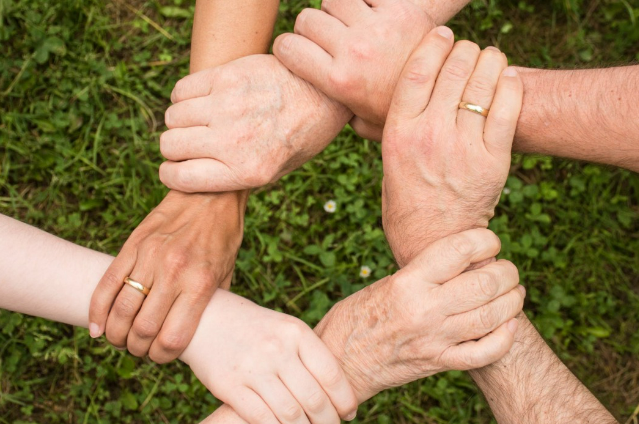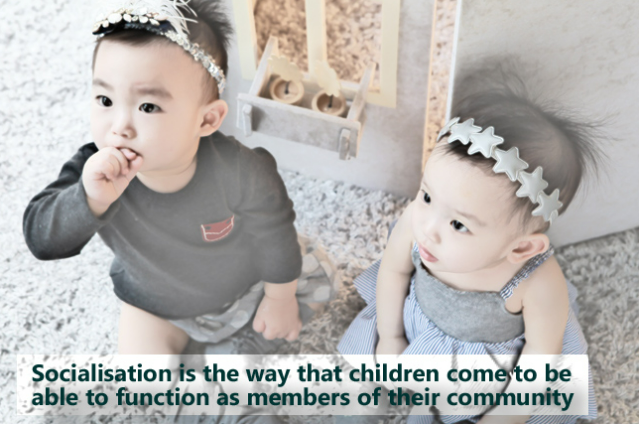Introduction
Aristotle the legendary Greek philosopher said,
“Man is by nature a social animal; an individual who is unsocial naturally and not accidentally is either beneath our notice or more than human. Society is something that precedes the individual.”
Basic Essentials of a Society:
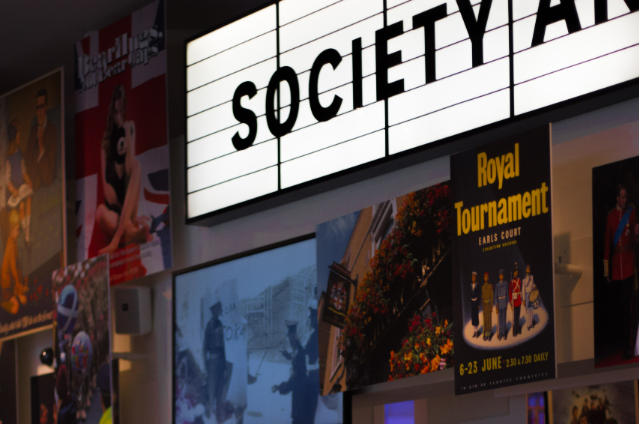
In comparison with other animals, human beings stand out as distinctive species. The uniqueness of human beings can be attributed to many factors. Human being alone has the ability to acquire knowledge and has qualities of socialising with the other fellow beings. This itself adds an extra dimension to human existence. The transmission of culture has made the humanoid to stem out of primates with all the difference. The content of culture is again very diverse. No single discipline can set out to study culture in all its infinite details. The anthropological, cultural and sociological being of the individual is of paramount importance. The cultural behaviour is again very vital in the personality development. Both the mental and physical processes require time for studying. Ideas such as social solidarity, economic exchange, technological production, political organisation, and kinship identification.
Man is a social animal and he always lives in society.
Basic Features of Society:
- The society involves a certain degree of association. The association may be a mere aggregation of people.
- The aggregation of people may not be voluntarily. They may come together with the intrinsic spirit of co-operation.
- The organisms regularly stimulate each other and contribute to the making of society.
- Society has a system of relations. Every society has its own structure. The existence of it is a continuous one and is independent of constituent individuals.
- The societal mode of existence has a greater survival value for those species which have become adapted to such a mode of existence. In fact, we don't find a single species that belongs to the category of mammals and which is living without the help of society.
- None of the social systems are purely stable. Hence, the idea of emergent evolution as discussed by Herbert Spencer can be well quoted here.
Societal Needs:
Every society has certain societal needs which must be fulfilled from time to time.
a) The need for population:- Societies of all kinds must make provisions for the following:-
- The need for nutrition or nourishment.
- The need for protection.
- The need for reproduction.
b) The need for specialisation:- Group cooperation among members presupposes the idea of division of labour and specialisation. The group members should have some mode of dividing work among themselves. The degree of specialisation may differ from society to society.
c) The need for solidarity:- Societies must guarantee some mode of conduct between the members and provide for some motivation for such contact. Added to this, the members must have the spirit of tolerance and must be able to distinguish themselves from other non-members.
d) The need for reproduction:- The society or the group must be able to perpetuate it's structure and character. It is not implied here that the members must always realise the societal needs and strive for their fulfillment.
Bio-Social Systems:
Heredity: The Main Trait of Bio-Social System
- The non-human social system meets it's basic needs mainly through the mechanisms that are determined by heredity. The individuals respond to the social situations instinctively. It does not mean that all the members react in the same way always as the physical characteristics of individuals differ. Hence, the continuation of the social system is through the transmission of genes. The society is nothing but the grip of organic evolution. It is biological in character and hence the name 'bio-social system'.
The Mammalian Vs Non-Mammalian System:

- Less body differentiation between males and females among mammalians:- In the mammalian social groups we find a very less bodily differentiation among the members than those of insects. Sex need has much to do with mammalians and it has a limited role to play among the insects. Further, the mammalian family is also quite smaller than that of any insect.
- Learnt social responses:- In the mammalian groups, social responses are learnt rather than inherited. The higher non-human mammals are capable of a good deal of learning.
- More flexible social behaviour:- The mammalian social behaviour is more flexible. They have greater capacity for modification. They learn things through hit and trial method. For them, heredity provides a flexible instrument for environmental adaptation.
Primate Society Vs Non-Primate Mammalian Society:
- The role of sex in primate society:- Sex is therefore an important element in group cohesion among do not have a definite mating season. In the primates, the female is as much ready as the male for sexual intercourse at all times. Thus, sex is an essential means of pervasive cohesion.
- Primates have a better sensori-motor equipment:- In comparison with lower mammals, the primates possess a more complex sensori-motor equipment.
- The role of the principle of 'dominance':- It is characterised in all mammalian social groups. The degree is higher in the primate group.
- Durable relationship between mother and child:- Among the primates, due to prolonged infancy we find relatively long lasting relationship between the mother and the child.
- Primates have a better communication mechanism:- They show a wide range of vocalisation, facial expression, bodily posture and manual exploration. They are trained to understand specific sounds. Here, again the primates do it much better.
The Homo sapiens, the high-minded type of primate has a clear edge over other primates for it has the facility of culture. The emergence of culture at their level has created a huge gulf between the human society and the society of the primates. The presence of culture together with the remaining traits of primate society at the level of human beings made the human society a distinctive one. It is briefly referred as 'socio-cultural' or in simply as 'human society'.
Human Society Vs Non-Human Society:
The mammals including the primates and human beings have established their supremacy over the non-mammalian social beings have established their supremacy over the non-mammalian social beings because of superior biological traits or qualities. But from the sociological point of view, the uniqueness and the supremacy of human beings over all the other animals including primates are to be sought through the phenomenon of culture. The primates that represent the highest order mammals too have their own limitations in comparison with man. Dominance of cultural system takes place significantly in human groups.
Dominance Role of Culture in the Socio-Cultural System:
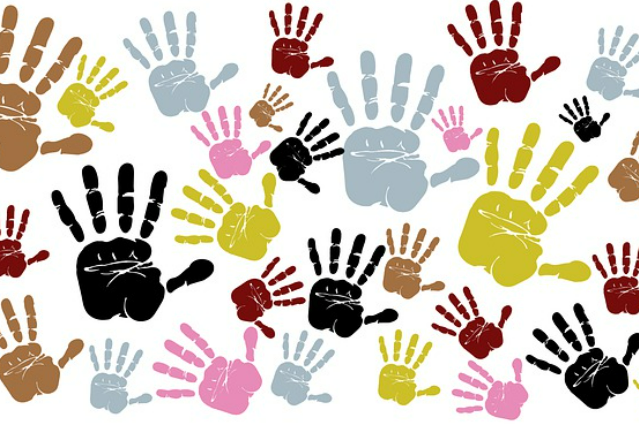
- Division of labour based on culture:- Human beings like all primates and mammals are structurally homogenous. Human society in this way is capable of creating it's own occupational groups which are not based on organic peculiarities.
- Continuous sexuality conditioned by culture:- Human beings possess the same reproductive physiology as those of anthropoids. But human society has continuous sexuality. We find constant association of men and women.
- Symbolic communication:- Human beings have greater neural complexity and hence have greater capacity for learning than the primates. Man has evolved a system of communication with time. The possession of language is a boon to the human beings which one can convey to the others a clear idea of situations which are not present and of the behaviour appropriate to such situations.
- The Speed of Learning:- Cultural learning has accelerated the speed of learning. Culture has been assisting man as a short-hand method of acquiring knowledge.
- The Volume of Learning:- The system of symbolic communication, a product of culture has increased not only the speed of learning but also the volume of things learnt. The human beings capacity to learn techniques, devices, principles, rules, beliefs, rituals, ideas, attitude and theories is beyond comparison. The techniques adopted and the experience gained by the previous generation can provide guidance for the learning of present generation.
- Division of labour in learning:- The quantum of one person learning is very much limited. It's not necessary that all the members of the group learn all the necessary shared experiences.
- Social survival depends on culture:- Culture belongs to the society and not to the individual. Hence, survival does not depend upon the strength and talents of particular individuals.
- The cultural invention of writing:- Writing extends the effectiveness of symbolic communication in human society. Inventions such as printing, radio and telephone, television may also do the same.
- Normative control of behaviour:- The symbolic communication has given rise to what is known as 'legitimacy' or the 'normative' in human society. The peculiarity is not present among the monkeys and apes. Attitude is conveyed as a part of cultural heritage, it is therefore the presence of the actual situations.
- The moral order of human society:- As against the animal society, the human society has not only a factual order but also a moral order. These two are casually interdependent. In the human society, the normative control exists because the individuals are always responsive to the judgements of others. Since they are subjected to the transmission of attitudes and ideas they are bound to be responsive, to the judgement of others. These received judgements of others become in course of time their own judgements about themselves. They approve or disapprove of their own acts and those of their fellow members. The concepts of 'conscience' and 'feelings of guilt' confirm this tendency of the people. An assessment of success or failure in one's endeavour to attain ends is also mostly influenced by the opinions of other. An individual is thus motivated to the esteem of his fellows.
- The normative factor modifies bio-social traits:- Further, the presence of the normative factor complicates every bio-social trait that we have inherited from our anthropoid ancestors. The human society is largely socio-cultural.
Individual and Society:
Man is a social animal. He lives in social groups, communities and in society. Human life and society almost go together. Man cannot live as man, without society. Solitary life is unbearable to him. Man is biologically and psychologically equipped to live in groups, in society. Society has become an essential condition for human life to arise and to continue. Society is more than our environment. It is within us as well as around us.
There is a vast literature on the questions such as the nature or the essence of man's social life, it's origin and sources. It is essential to study the deepest relations that exist between the individual and society. It is equally significant to know the nature of man's motives or impulses towards society.
The Sociality of Man

It was Aristotle who said long back that man is a social animal. This presumption gives room to the central problem of sociology that is the sociality of man. The essential fact is that man always belongs to a society or a group of one kind or the other, and without it, he cannot exist. Several questions of great sociological importance arise in this regard. 'In what sense man is a social animal? In what sense do we belong to society? In what sense society belongs to us? What is the nature of our dependence upon it? These questions takes us to a more fundamental question of the relation between the individual and society.
The relationship between the individual and society is ultimately one of the most profound of all the problems of social philosophy. It is, in fact, a philosophical rather than a sociological problem, because it involves the question of values.
Man Depends on Society:
It is a thing of common observation of every one that the individual is living, breathing, working, playing, resting, praying, enjoying, suffering, sometimes sweating, sometimes sweating with millions like him in society. The individual is all encompassed by culture. It is in the society again, that he has to conform to the norms, occupy statuses and become members of groups.
It is a self-obvious fact that man has not only a capacity for social life but also an intrinsic need of it. Emotional development, intellectual maturity and a certain amount of material goods and comforts for the full exercise of his liberty and progress are unthinkable about society. No human being is known to have normally developed in isolation. A few instances like that of Kasper Hauser; the wolf children of India called Kamala and her sister; the isolated, illegitimate child Anna and others have fortified the fact that man develops human qualities only in society. He can attain his real nature only in society. The psychological development of the social consciousness of the child is also a confirmation of the sociality of the human being. The biological potentiality of becoming social is inherent in the very social nature of man.
Two Theories Concerning the Nature of Society:
Relationships between man and society has been propounded by several thinkers. They are:-
1) Social Contract Theory:
It throws light on the origin of society. According to this theory, all men are born free and equal. Society came into existence because of an agreement entered into by the individuals. The classical thinkers of this thought are, Thomas Hobbes, John Locke and J.J. Rousseau.
a) Thomas Hobbes ( 1588- 1679 )
He was of the opinion that society came into being as a means for the protection of men against the consequences of their own nature. He believes that prior to the existence of society, existed a State of Nature.
Hobbes in his book 'Leviathan' has made it clear that man in the state of nature was not at all social. According to him, man found 'nothing but grief in the company of his fellows' - all being almost equally 'selfish, self-seeking, cunning, egoistic, brutal and aggressive.' For him, the life of man was 'solitary, poor, nasty, brutish and short.'
The conditions in the state of nature were intolerable and men longed for peace, people entered into a kind of social contract to ensure security for themselves and certainity of life and property. The contract became binding on the whole community as a perpetual social bond.
b) John Locke ( 1632- 1704 )
Locke believed that man in the state of nature was enjoying an ideal liberty, free from all rules and regulations. The state of nature was of peace, goodwill, mutual assistance and preservation. With corruption rooting inside, the society began to degenerate. The society was full of fear and complete danger. In order to end this, people entered in a social contract to achieve a civil society.
c) Jean Jacques Rousseau ( 1712-1778 )
He believed that man in the state of nature was a 'noble savage'. People lived a life of simplicity. Happiness and equality characterised this society. But these didn't last long. With the development of thoughts like, 'mine' and thine', difference start to rise in societies. Murder, conflicts and anarchy became the order of day. Aiming to end this, people entered into a social contract. The contract would be based on 'general will'.
Criticism:
- The theory of social contract seems to be a mere fiction. Voluntary agreements have not been a feature in historical societies.
- The theory is away from facts. Nothing like the State of Nature existed.
- The advocates of this theory hold that the individuals entered into contract for their individual safety and security of property.
- The contract is not contributing greater stability to the social systems.
- Conception of natural rights and natural liberty is illogical. Laws and rights have their meaning with respect to society.
- Further, there can be no consensus on common interests of the members of the society.
2) The Organismic Theory of Society
This view conceives society as a biological system, a greater organism alike in it's structure and functions. This theory can even be dared back to Plato and Aristotle.
Plato compared society and state to a magnified human being. He divided society into the three classes of rulers, the warriors and artisans based upon the three faculties of the human soul, that is wisdom, courage and desire. Aristotle drew a comparison between the symmetry of the state and symmetry of the body firmly held that the individual is an intrinsic part of society. The parallelism between an individual organism and social organism has been worked out to the minutest possible extent by Bluntschli and Herbert Spencer during the recent times.
Just as the animal body is composed of cells, so is the society composed of individuals, and as is the 'relation of the hand to the body or the leaf to the tree, so is the relation of man to society. He exists in it and it exists in him.
Views of Herbert Spencer:
He said that society is an organism and it does not differ in essential principle from the other biological organisms. The attributes of an organism and the society are similar. With increase in complexity patterns of society, division of labour follows. There is a degree of mutual dependence seen in respect to different parts.
Spencer gives striking structural analogies between society and organism. He says, society, too has three systems corresponding to the
a) The Sustaining System in an organism consists of mouth, gullet, stomach and intestines. It is by means of this system that food is digested and the whole organic machine is sustained. Society has its own sustaining system which refers to the productive system comprising the manufacturing districts and agricultural areas. The workers are the alimentary organs of a society.
b) The distributory system in an organism consists of blood vessels, heart, arteries and veins and they carry blood to all parts of the body. What arteries and veins mean to human body, roads, railways, post and telegraph services, institutions and associations, mean to society.
c) Finally, the regulating system is the nerve-motor mechanism which regulates the whole body. Government in society regulates the activities of the individuals. Spencer has opined that society also passes through the organic processes of birth, youth, maturity, old age and death.
Differences between Society and an Individual Organism:
a) Society as well as individual organism grow in size.
b) They grow from comparatively a simple structure to that of an increasingly complex one.
c) Increasing differentiation leads to increasing mutual dependence of the component parts.
d) The life of the whole becomes independent and lasts longer than the life of the component parts.
Criticism:
a) The analogy used in the organic theory is obviously there to serve it as it stresses the unity of society. The social cohesion between individuals is of a remarkable feature. The welfare of each is involved in the welfare of all. An individual cannot be separated from society.
b) A society has no specific form comparable to the body of an individual. Individuals are not fixed in their respective positions like those of an individual organism. The units of a society are dispersed persons and are not physically continuous like cells of the individual. Society has no 'common sensorium', no central organ of perception and thought as an individual has.
c) It is true that man cannot be the best of himself independent of society but can live autonomously. This is not possible in an organism.
d) It is true that the society has grown from similarity to simplicity to dissimilarity and complexity. But common-sense tell us that society is not subject to the same process of birth, growth and decay as an organism. An organism comes into existence by the union of two organisms. This is not the method of the birth of society.
Hence, society does not originate or renew itself as a plant or as an animal does. The theory is born of dangerous results. Some describe that the unity of society is maintained at the cost of sacrificing individual interests. An organism dies. But society is not liable to death. It is permanent, it endures. Society does not originate or renew itself as a plant or as an animal does.
Limitations of the Theories:
The social contract seems to be a mere fiction. What we know today is that the society came into being due to a deliberate contract or voluntary agreements among the early people.
The organismic theory is equally imaginary. Society is like an organism, but it is not an organism. Society has no specific form, no fixed organs, no central organ of perception comparable to the body of an organism. This organic analogy is well appreciated but the theory is almost rejected.
The Inseparable Individual and the Society
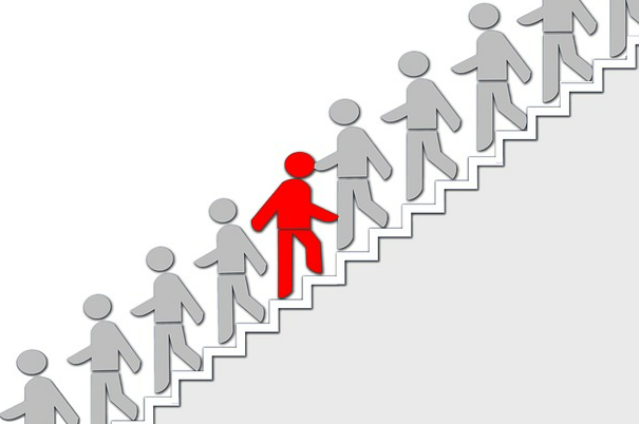
The relation or the type of unity between the part and the whole, between the individual and society is not merely a physical unity, or a functional unity, or organic or systematic unity, but it is something more than these. It is sui generis of its own kind. It is simply social, that is, without the company of his fellowmen, the individual cannot live at all, nor develop his personality. Still, the individual has a life of his own, his autonomy or character which cannot be fused or confused with the lives of other men. Social values are in the ultimate analysis personal values. Even quality or powers which belong to society as such are realised only in its members, present or future. The life of society has no meaning except as an expression of the lives of the individual. The truth is that society is not and cannot be an organism. Society has no body - it is an organisation of minds for a common purpose. Society is the sum of interacting individuals and this interaction is that differentiates society from the mere aggregation of individuals. Society is a reality of it's own kind, itself unique, and different from every other natural object. Society gives us no choices, inviting us to accept or decline and in our selections we become ever more completely what we are.
Man in Society and Society in Man:
Everywhere and all the time we are members of groups. The isolated individual does not exist. The language, the fooding pattern, our goals, ideals are all derived from culture. Culture is a societal force. Society surrounds us in our infancy and follows us to our resting place. We depend upon society and it's processes not only for our livelihood but for our very lives.
'Society not only controls our movements, but shapes our identity, our thought and our emotions. The structures of society becomes the structures of our own consciousness. --- Peter L. Berger.
Society does not stop at the surface of our skins. Society penetrates us as much as it environs us. Our bondage to society is not simple but complex. We are entrapped sometimes by our own social nature.
The walls of our imprisonment were there before we appeared on the scene, but they are ever rebuilt by ourselves. We are betrayed into captivity with our own cooperation. Society is external to ourselves. The institutions of society pattern our actions and even shape our expectations. The society was there before we were born and it will be there after we are dead. Our lives are but episodes in it's majestic march through time. In sum, society is the walls of our imprisonment in history.
Scope for Individuality:
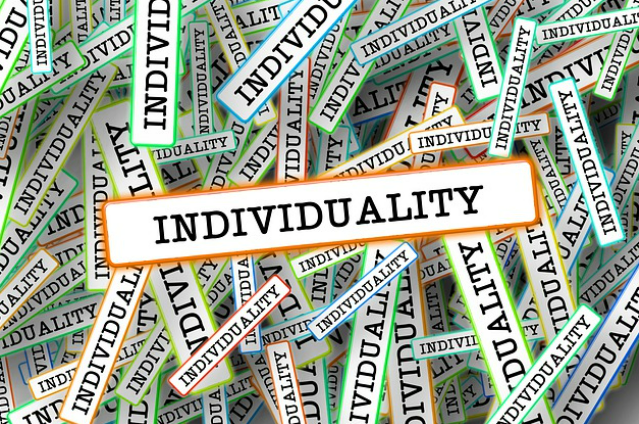
We need society in order to become persons. From it we receive the gift of individuality and in it we express our personality. The same society also limits the activities of man. No culture produces individuals who are like carbon copies. A culture may garner both genius persons and stupid ones too. Not only society has a history of it's own but every individual too has his own history. Different individuals may react to the same stimuli in different ways because of their individuality. The individuality is the gift of the society. Thus, individuals become individuals only in society. Planned experiments upon human beings are most reliable when these subjects do not know the true object of the experiment. They may give a rationale about the experiment being performed. Investigation of specific topics might conceal or distort the processes involved. Hence, the individuality also finds contention with the larger idea of sociality. Greater individuality depresses the social behaviour and vice-versa. Individual being the primary unit of society is always of great significance in sociological studies.
Human societies are not uniform. They differ from each other in several aspects. There are multiple comparisons between societies. Large scale analysis of social systems has led to the comparative analysis of societies. Such an analysis requires the classification of societies. The various types of social classification are cited as follows:-
a) Morgan's Classification:- Lewis Henry Morgan ( 1818-81 ) in his work 'Ancient Society' divided all societies into three groups - savage, barbarian and civilized. In short, human societies progressed from savagery through barbarism to civilization.
b) Comte's Classification:- August Comte presents a classification based on the assumption that societies passed through distinct stages of belief or ideology evolving from the lower to the higher stages. His scheme consisted of types of societies namely, military society, legal society, industrial society which correspond to three types of thinking namely, theological thinking, metaphysical thinking and positive thinking.
c) Spencer's Classification:- Herbert Spencer classified societies into militant societies and industrial societies. The regulating system is much dominant than the sustaining system.
Classification of Societies Based on the Mode of Subsistence or the Types of Technology:
According to Lenski and Lenski, the diverse societies which are existing at present can be classified into a limited number of basic types depending upon the technologies of the subsistence strategies that they use to exploit the natural environment. Societies try finding some productive strategies which have tended to grow larger and more complex.
Speaking about the evolution of societies, it could be said that there has been a general historical trend of socio-cultural evolution, a process which is more or less similar to biological evolution.
Societies can generally be classified into following types:
1) Hunting and Gathering Societies:

Lenski in his 'Human Societies', the oldest and the simplest type of society is the 'Hunting and Gathering Society'. Such a society is characterised by small population, a nomadic way of life and a very primitive technology. They were found using primitive tools for various occupations. Their mode of subsistence dependent on the exploitation of wild animals. Around 2,000 thousands years ago, the case was almost with all type of societies. Examples of such types of societies are, Aranda of the Central Australian desert, San people of Kalahari desert in Southern Africa and Bushmen of Southern Africa.
Characteristics of Hunting and Gathering Societies:
a) Such societies exist in small numbers and scattered groups. They live in small primary groups and sometimes their number does not even exceed 40-50 members.
b) These people are constantly on the move because they leave one area as soon as the resources of an area get exhausted.
c) There is no strong desire among the people to acquire wealth for two main reasons: First, no individual can acquire wealth for there is no wealth to be acquired.
d) Family and kinship are the only defined instructions:- Hunting and gathering people have the only interconnected social institutions which are somewhat well defined. Family and kinship have their defined functions.
e) In these institutions, the difference between the ruler and the ruled is not there, because political institutions are not found here. Statuses in these societies are essentially equal and hence the difference between the leader and the followers is not there.
f) There is no scope for division of labour in these societies except along the lines of age and sex. There is gender-based division of labour but there is no gender inequality as such. Production is cooperative and the distribution is based on sharing.
g) Constant need to face dangers:- Some hunters and gatherers constantly face the danger of extinction in a struggle against adverse environments.
h) Religion is not developed as a complex institution here. They tend to see the world populated by unseen spirits that must be taken into account but not necessarily worshipped.
2) Herding or Pastoral Societies:
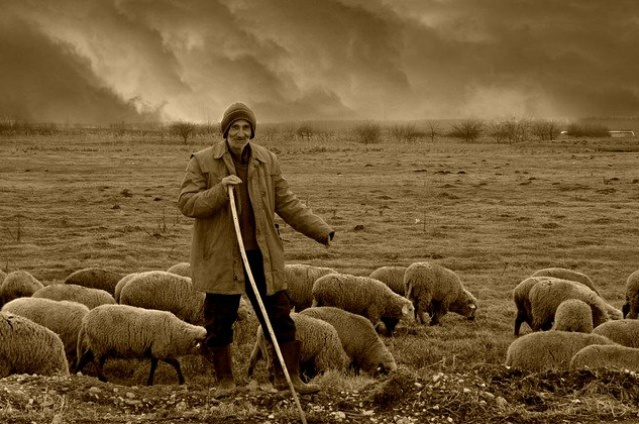
Image by Adina Voicu from Pixabay
The herding society is one which relies on the domestication of animals into herds as a major means of support. Herding society refers to any form of society whose main subsistence comes from tending flocks and herds of domesticated animals. In practice, subsistence needs are often met by a combination of herding with hunting and gathering and other forms of agriculture. The Bakhtiari of Western Iran are regarded to be the example of pastoral societies.
Characteristics of Herding Societies:
a) Herding societies are larger in size and have thousands of members along.
b) Pastoralism has proved to be a better productive strategy than hunting and gathering for it provides an assured food supply and permits the accumulation of surplus resources.
c) Since pastoralism contributes to the accumulation of surplus resources, some individuals who have better access to surplus, become more powerful than others and pass on their status to their descendants.
d) Herding people like hunters and gathers are nomadic because of their seasonal need to find sufficient grazing areas for their herds.
e) They commonly believe in Gods who take an active interest in human affairs, and look after the people who worship them. Their belief seems to have been suggested by the pastoralists experience of the relationship between themselves and their flocks.
f) The herding society tends to place a higher value on their temporary territories than do the hunting and gathering societies. Dispute over grazing rights in herding societies sometimes result in warfare. Slavery make it's appearance as captives in war are put to work for their conquerors. Ideas about private property and inheritance of wealth are likely to emerge. Patriarchal forms of social organisation tend to appear with time. With increase in population, complex social institutions come into being.
3) Horticultural Societies:

Horticultural societies are group of social systems based on horticulture, a mode production in which digging sticks are used to cultivate small gardens. Such societies produce it's food through cultivation of the soil with hand tools. Horticultural societies first came into existence in the Middle East about 4000BC and subsequently spread to China and Europe and survive even till today in Africa. It is associated with the elementary discovery that plants can be grown from seeds. Horticultural societies first appeared in Gururumba Tribes in New Guinea and Masai people of Kenya.
Characteristics of Horticultural Societies:
a) Horticulturalists cultivate manually with various tools. Like hunting-gathering societies, horticultural societies are just subsistence societies.
b) Horticulturalists are typically based on 'slash and burn technology'. Type of strategy where people cut the trees and burn it to form ash that would form humus. It is essentially an alternative to pastoralism depending upon the environmental factors people select one or the other.
c) Unlike the pastoralists, horticulturalists are relatively better settled and they must move short distances. They develop settlements.
d) The society assures better food supply and the possibility of surplus. Existence of surplus leads to specialisation of roles.
e) Warfare is common in horticultural societies. Wealthy individuals crafted their capital to form various political institutions. In fact, horticultural societies are also the first known societies to support the institution of slavery. Development of cultural artefacts took place.
f) Cannibalism usually involves either eating one's deceased relatives as an act of piety or eating one's enemies skin as an act of ritual revenge. The successful hunting of heads is taken as evidence of the courage and skill of the warrior. The emergence of human sacrifice coincides with a change in the nature of religious beliefs.
4) Agricultural or Agrarian Societies:

Around 3000 BC, the invention of the plough led to the beginning of agrarian society. An agricultural society focuses it's mode of production on agriculture and the cultivation of large fields. It refers to any form of society, especially so traditional societies, primarily based on agricultural and craft production rather than the industrial production.
Characteristics of Agricultural Societies:
a) The invention of the plough around 3000 BC has enabled people to make a great leap forward in food production.
b) Combining irrigation techniques with the use of plough has further increased productivity and made the yields much more reliable.
c) Introduction of plough has allowed prosperity and urbanisation to flourish in.
d) Agricultural societies are relatively larger in size as there is a greater burden of work with these people.
e) In such societies, a hereditary monarchy tends to emerge. Concentration of power in the hands of a particular individual.
f) Agricultural societies are based on the principle of concentration of wealth and hence the division of social classes.
g) Agriculture societies provide the basis for establishment of economic institutions. Trade becomes elaborate and money is used as a medium of exchange.
h) Religion of the agricultural societies often include the worshipping of a number of gods.
i) Warfare and empire building engaged these societies as time advanced. The developments necessitated the formation of the following structures.
j) Agricultural societies are able to support people whose sole purpose is to provide creative ideas to culture.
k) The transformation of agricultural societies to a particular social structure has been revolutionary. The number of statuses multiplies, population size increases, cities appear, new institutions emerge, social classes arise, political and economic inequality becomes built into the social structure, and culture becomes much more diversified and heterogenous.
5) Industrial Societies:

Industrial revolution began in England about 300 years ago. It was very successful and spread almost to each and every corner of the world. An industrial society is a social system whose mode of production focuses primarily on finished goods manufactured with the aid of machinery. It refers to a society where both industrialisation and modernisation have occured. The term originates from Saint-Simon who choose it to describe it as the changing role of manufacturing industry.
Characteristics of Industrial Society:
a) Industrialisation refers to the application if scientific knowledge to the technique of production, enabling new energy to be harnessed. It is a highly efficient subsistence strategy.
b) Technology based on modern scientific knowledge leads to higher rate of technological innovations. Such societies are in a continual state of rapid social change.
c) The high levels of productivity of industrial societies further stimulates population growth with increasing members living in societies and metropolitan areas.
d) As industrialism spreads and population grows, division of labour becomes highly complex. Industrial society generates high degree of employment.
e) Family and kinship as institutions are losing importance. It no longer remains as a producing unit but has to be contended with as a unit of consumption.
f) Religion losing its hold over the people in such societies. The world no longer remains as the god-centred world for it is looked upon as the man-centred one.
g) Autocracies dying to give place to more democratic institutions. State which assumes the central power in the industrial society is more known for its welfare activities than for the regulative functions. State are equipped with the war weapons to fight wars but the actual outbreak of war are relatively infrequent.
h) Monopoly of wealth and power with one section generates economic inequality as a whole.
i) Industrial societies give rise to a number of secondary groups such as corporations, political parties, business, houses, government, bureaucracies, cultural and literary associations and special-purpose organisations of various kind. New life styles and values create a much more heterogenous culture which spreads it's influence far and wide.
Industrial and Pre-Industrial Societies: Comparative Analysis:
a) In the pre-Industrial societies, social structure is comparatively simple. There is less scope for division of labour, which is mostly based on age and sex. In the industrial societies, the social structure is much more complex. There is vast scope for division of labour and specialisation and it is more based on personal talents, abilities, efficiency, experience and preferences than age and sex.
b) In the pre-industrial societies, we find the domination of primary groups such as family or kinship groups. Life is connected in social relationships which are conducted on an intimate and personal basis. In the modern industrial societies, social life occurs in the context of secondary groups and large urban communities. Social relationships take place mostly on an impersonal basis.
c) Status in the case of the pre-industrial societies are normally ascribed that is usually determined by the unchanging element of birth. In modern societies, many statuses can be achieved with the help of merit and competence for a particular position.
d) In pre-industrial societies, homogenous culture are found in the ways of thinking, behaving, dressing, conversing and behaving. Unity and uniformity in social life are largely visible. Life is simple and smooth with less of stress. Industrial societies are marked by urban ways of life and culture. Life is complex and manysided.
e) In pre-industrial societies, behaviour of the people is regulated by informal means such as social customs, traditions, folkways, notes and the like which are rarely questioned. People develop a strong sense of identity. The industrial societies attempt to control behaviour through more institutionalised means like laws, legislations, written contracts with specific penalities and procedures for dealing with offenders.
f) In the pre-industrial societies, rate of social change is usually very slow. People are not normly ready for sudden changes. While the industrial societies, rapid change becomes a normal state of attires. People positively react towards social change.
The societies actually exist on a continuum from pre-modern to modern rather than as purely one or the other. Furthermore, no modern society is modern throughout it's territory. Social relations in some areas are more community than associations and are characterised by mechanical solidarity. Societies move towards the modern end of the spectrum.
Concept of Socialisation
Man is not only social but also cultural. It is the culture that provide opportunities for man to develop the personality. Development of personality is not an automatic process. Every society prescribes it's own ways and means of giving social training to it's new members so that they may develop their own personality. This social training is called 'Socialisation'. The process of socialisation is conditioned by culture. Since every society has its own culture the ways of the process of socialisation also differ from society to society. Further, the same culture and same ways of socialisation may have diverse effects on the development of the personality of the members of the same society. Thus, a culture need not necessarily produce stereotype personalities. There is scope for individuality in the process of socialisation. But the fact the culture puts limitations on the development of personality cannot be ignored. The mutual interplay of culture and socialisation in conditioning human personality with special emphasis on the phenomenon of socialisation. Little of man's behaviour is instinctive. Rather it is largely the learnt behaviour from society. The human child comes into the world as a biological organism with animal needs. He is gradually moulded in society into a social bring and learn social ways of acting and feeling. Process of moulding and shaping the personality of the human infant is called 'socialisation'.
Man is not born Social:
At birth the human child possess the potentialities of becoming human. The child becomes a man or a person through a variety of experiences. He then becomes socialised. Socialisation means the process whereby an individual becomes a functioning member of the society. The individual becomes socialised by learning the rules and practices of social groups. By this process, the individual develops a personality of his own. Man is man because he shares with others a common culture. Socialisation is significant for the infiltration of cultural behaviour in an individual. The transmission of culture is a process whereby men learns the rules and practices of social groups. It is an aspect of all activity within all human societies. We are socialised in the course of the activities themselves.
'Socialisation is the process by which the individual learns to conform to the norms of the group.' - W.F. Ogburn.
Every man tries to adjust himself to the conditions of the social environment. This process of adjustment is itself socialisation. This helps the group to maintain it's order. The social order is maintained largely by socialisation. Socialisation is a process of transforming the human animal into a human being. It is still a phenomenon that awaits much exploration. No one understands the process entirely.
Socialisation is a Continuous Process:
It is a process of inducting the individual into the social world. It consists in teaching culture which he must acquire and share. Socialisation is nothing but social learning. This learning is not intermittent but continuous. Perfection in social learning is rarely achieved. It continues throughout our life. Man belongs to different groups at different stages of life. As these groups change, so we must learn new rules, new patterns of behaviour. Moreover, we do not remain within the same role. Physical maturity by itself cannot produce perfect human adults without socialisation. Socialisation and maturation may proceed together in the early years of the life cycle. The heart of the process of socialisation is the emergence of the development of self. The notion starts to arise as the child learns something of the world of sensations about him. Everyone has a certain degree of consciousness of self. There are not as such behavior mechanisms which make individual a part and member of any group. The child at birth is not conscious of any of the self and other relationships. These relationships the child learns through the process of socialisation.
Internalisation of Social Norms:
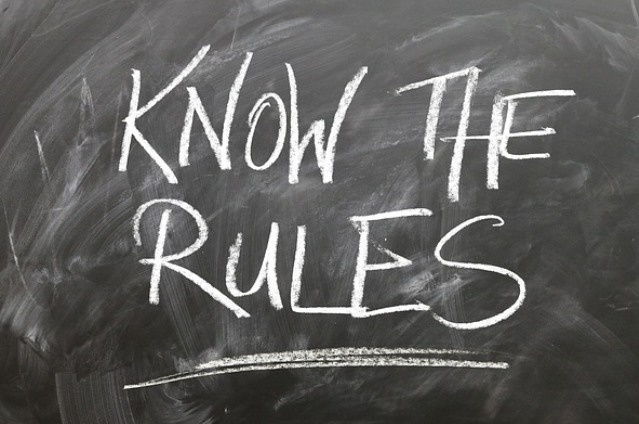
It is often described as the process whereby an individual internalises the norms of the group. As a result of this, a distinct 'self' emerges unique to the individual. In the process of socialisation, the individual learns culturally approved habits, ideas and attitudes. He is fitted into the social group by being taught the rights and duties of his position. His drives are guided into approved channels of expression. The cultural rules and restrictions are so internalised that they become part of his personality.
Internalisation of norms refers to the process in which the norms become a part of the personality. To begin with, the human child does not have the sense of right and wrong, desirable and undesirable, moral and immoral, acceptable and unacceptable, good and bad, justifiable and unjustifiable and so on. By trial and error and by direct or indirect observation and experience the child slowly learns the approved way of behaving. He learns to distinguish between the right and wrong. Parents and other members also help the child to learn the norms of the groups. They reinforce the child's learning by rewards and punishments or by means of approval and disapproval. The related experiences of the child help him internalise the norms in his personality.
- Internalised Norms and the Daily Life:- In our daily life, we interact with many people and do many tasks. We do not think about what we are going to do when we get up from our bed, go out from the home, enter a shop, get into a bus, classroom, cafe, meeting a friend and so on. The norms which we have internalised help us to decide what to do and what not to do under different social situations. The development of self is closely associated with the internalisation of norms.
- Internalisation of Norms Helps Self-Control:- Internalisation of norms is an important aspect of socialisation. It lessens the problem of social control for society. Ultimately, social control is achieved when self-control is mastered. The individual is able to exercise discipline by himself over his own actions and behaviour. More than the enforced means of social control such as customs and traditions or laws and legislations, the internalised norms are more effective. They have an enduring effect on the personality of the child. Internalisation of norms has given the manifestation in an incest taboo.
- Internalisation of Norms due to Indoctrination:- It is wrong to assume that hope of reward and fear of punishment are the only reasons as to why people conform to the norms. People conform to the norms because they are indoctrinated to do so. Indoctrination refers to the process of injecting into the personality of the child the group norms. Conformity to the norms is a means of group identification.
- Internalisation of Norms and the Development of Individuality:- It is wrong to suppose that internalisation of norms provides no scope for the development of individuality. The individual is not only socialised, he also influences others and socialises them. He participates in the society both by being influenced by others and by influencing them.
Types of Socialisation:
a) Primary Socialisation:- It takes place in the early years of life of the newborn individual. It concentrates on the teaching of the language and cognitive skills, the Internalisation of cultural norms and values, establishment of emotional ties and the appreciation of other roles and perspectives.
b) Anticipatory Socialisation:- Men not only learn the culture of the group of which they are immediate members. They may also learn the culture of groups to which they do not belong. Such a process whereby men socialise themselves into the culture of a group with the anticipation of joining that group.
c) Developmental Socialisation:- This kind of learning is based on the achievements of primary socialisation. This type of behaviour develops on the idea of new learning that is blended with new experiences.
d) Re-socialisation:- It takes place when a social role is radically changed. It may also happen in periods of rapid social mobility.
Agents of Socialisation:
Personalities do not come ready-made. They are moulded or shaped through the process of socialisation. The process operates throughout life. It is a process which begins at birth and continues till the death of the individual. It is an endless process. From the societal point of view, the child is valued more for 'what he will be' than 'what he is'. Socialisation helps the child to become a useful member of the society. It gives him social maturity. Hence, it is quite natural that the child's socialisation has not been left to mere accident. Rather there's an institutionalised framework which is controlled through various agents. Various types of communications are attached with an individual.
a) Family and parents:- The process of socialisation initiates from the family itself. Here, the parental and particularly the maternal influence on the child is very great. The intimate relationship between the mother and the child has a great impact on the shaping of child's abilities and capacities.
b) Peer groups:- These groups are made up of the contemporaries of the child, his associates in school, in playground and in street. He learns from these children, facts and facets of culture that they have previously learnt at different times from their parents.
c) Teachers:- The teachers also play their role in socialisation when the child enters the school. It is in the school that the culture is formally transmitted and acquired, in which the folklore and the learning, the science and art of one generation is passed on the next. It is not only the formal knowledge that it transmitted but also the ethical sentiments, political attitudes, customs and taboos.
d) Literature and mass media of communication:- There is another source of socialisation. Words rush at us in torrent and cascade, they leap into our vision, as in billboard and newspaper, magazine and textbook and assault our ears as in radio and television. The media of mass communication give up their messages. In short, our conscience listens to thousands of tongues and accordingly assimilates.
Who Socialises the Child?
A child behaviour is influenced by two types of people:-
a) Those who have authority over him. People in authority generally command and expect allegiance from the children. They are the parents.
b) Those who have equality with him. The child maintains equalitarian relations with those who are of the same age, sex and rank.
Role of Culture in Socialisation:
Socialisation is mainly a matter of social learning or cultural learning. Cultural learning is the process by which the individual learns the fundamental cultural patterns of the society in which he will live. Through cultural conditioning, an individual develops the attitudes approved in the society. Academic learning cannot guarantee socialisation. The experiences of an individual are not cultural but personal at some times.
- Culture defines situations:- It not only defined but also conditions and determines various aspects of our life.
- Culture defines attitudes, values and goals:- Attitudes refer to the tendency to feel and act in certain ways. Values are the measure of goodness or desirability. Goals refer to the attainments which our values define as worthy. It is the culture which conditions our attitudes towards various issues such as religion, morality, marriage, science, family planning etc. Our goals of winning race, understanding others and many more all set by our culture.
- Culture decides our career:- Individuals may develop, modify or oppose the trends of their culture but they always live within it's framework. Only a few can find outlet in the culture.
- Culture provides behaviour patterns:- Culture directs and confines the behaviour of an individual. Culture assigns goals and provides means for achieving them. It rewards his noble work and punishes the ignoble ones. It assigns him statuses and roles.
No individual is completely culturally defined. Every individual is unique in any culture. The uniqueness may be based on multiple features of diversity. Various biological and social factors bring about the uniqueness of the individuals in any culture.
Characteristics of Culture:
a) Culture is learnt:- Culture is not inherited biologically, but learnt socially by man. It is not an inborn tendency. There is no such cultural instinct as such. Culture is often called 'learned ways of behaviour'. Unlearned behavior which includes the involuntary functions of human body are not cultural.
b) Culture is social:- Culture does not exist in isolation. Neither is it an individual phenomenon. It is a product of society. It originates and develops through social interactions. It is shared by the members of the society. No man can acquire culture without association with other human beings.
c) Culture is shared:- Culture is something adopted, used, believed, practiced, or possessed by more than one person. It depends upon group for it's existence.
d) Culture is transmissive:- Culture is capable of being transmitted from generation to the other. Culture is not transmitted genetically but sociologically.
e) Culture is continuous and cumulative:- Culture exists as a continuous process from generation to generations. It is cumulative in nature as with every passing social groups, new tunes of cultural behaviour are being gripped together.
f) Culture is consistent and integrated:- Culture had revealed a tendency of consistency. Different parts of culture are interconnected.
g) Culture is dynamic and adaptive:- Though culture is relatively stable and it is not altogether static. It is subject to slow but constant changes. Changes and growth are latent in culture.
h) Culture is gratifying:- Culture provides greater opportunities and prescribes means for the satisfaction of our needs and desires. These needs may be biological and social in nature.
i) Culture varies from society to society. It differs from society to society. Culture of every society is unique to itself. It is not uniform in nature.
j) Culture is superorganic and ideational:- By being superorganic, culture is neither organic nor inorganic in nature. It is ideational because every society considers it's culture as an ideal. It is regarded as an end in itself. It is intrinsically valuable.
Functions of Culture on Human Personality:
- Culture is the treasury of knowledge:- It is essential for the physical, social and intellectual existence of man. It provides us intelligence and learning capacity.
- Culture defines situations:- Culture defines social situations for us. It not only defines but also conditions and determines our behaviour.
- Culture defines attitudes, values and goals:- Attitudes refer to the tendency to feel and act in certain ways. Values are the measure of goodness and desirability. Goals refer to the attainments which our values define as worthy. It is culture which conditions our attitudes and behaviour.
- Culture decides our career:- It sets an limitation on the advancement of an individual in a particular career. An individual may develop, modify or oppose the trends of their culture but they always live within it's framework.
- Culture moulds personality:- No body can develop his personality in the absence of a cultural environment. Culture prepares man for group life and provides him the design of living. It is the culture that provides him opportunities for development.
Development of Culture:
Man is the only animal who posseses culture. It is a unique possession of man. Culture is associated with the species known as 'Homo Sapiens', the final product of organic evolution. Culture evolved slowly just as some anthropoids gradually took on more human form. Culture is often something that is created and cultivated by man. Man's culture in a way has begun with man's capacity to use and to create or produce tools and techniques. The earliest tools used by man cannot be dated exactly. Thus, we find a striking parallel between the biological evolution and the development of culture. The cultural development take place either due to the invention of new traits or due to the diffusion of new traits from outside the culture.
Significance of Socialisation:
a) Socialisation covers the man, the biological being into man, the social being:- Man is not born social. He becomes social by virtue of this process. Interaction with society is much essential for an individual for his self-sustenance.
b) Contributes to the development of personality:- Personality is a product of society. In the absence of groups or society, no man can develop a personality of his own. It is a process through which the personality of the new born child is shaped and moulded. It prepares the child to lead an approved way of social life.
c) Helps to become disciplined:- It is a social learning. It is essentially the learning of rules of social behaviour. It is through socialisation that the child learns not only rules of social behaviour but also the values, ideals, aims and objectives of life and the means of attaining them. Socialisation disciplines an individual and helps him to live according to the social expectations.
d) Helps him to enact different roles:- Every individual has multiple roles in society. Every role is woven around norms and is associated with different attitudes. The process of socialisation assists an individual not only to learn the norms associated with roles but also to develop appropriate attitudes to enact those roles.
e) Provides the knowledge of skills:- Socialisation is a way of training the new born individual in certain skills which are required to lead a normal social life. These skills help the individual to play economic, professional, educational, religious and political roles.
f) Helps to develop right aspiration in life:- Every individual may have his own aspirations, ambitions and desires in life. All these aspirations may not always be in consonance with the social interests. Some of they may even be opposed to communal interests. But through the process of socialisation an individual learns to develop those aspirations which are complementary to the interests of the society.
g) Contributes to the stability of the social order:- It is through the process of socialisation that every new generation is trained according to the cultural goals, ideals and expectations of a society. It assures the cultural continuity of the society.
h) Helps to reduce social distance:- Socialisation reduces social distance and brings people together if proper attention is given to it.
i) Provides scope for building the bright future:- Socialisation is one of the powerful instruments of changing the destiny of mankind. It is through this process that a society can produce a generation of it's expectations. The improvement of socialisation offers one of the greatest possibilities for the future alteration of human nature and human society.
j) Helps the transmission of culture:- By transmitting the contents of culture such as ideas, beliefs, language, skills, etc. from one generation to the other. Hence, the process contributes to the continuity of culture also.
Failures of the Socialisation Process and the Problems of Faulty Socialisation:
It is true that socialisation is a powerful factor that helps to bring about social conformity. It is equally true that it's an effective instrument for connecting generations with generations. Still, like any other social mechanism it has its own limitations. Socialisation is not an all-out cure for all problems of personality.
a) Culture cannot be understood completely:- It is said that socialisation is here to transmit cultural values from generation to another and from one person to another. But no individual can internalise the total culture of the society. No one can internalise all the ways of working and there's no doubt in that even. Some degree of deviance is always present in society. This is the inevitability in a social system.
b) Damage to self-image:- Development of proper self-image is vital to successful socialisation. Failure in socialisation would damage the self-image of the child. An unsatisfactory self-image often leads to unpleasant anti-social or delinquent behaviour. A great deal of such a behavior may lead to the destroyal of 'self'. Ultimate response to unworthiness is anomie.
c) Failure of socialisation and mental illness:- Communication gaps and problems with the agents of socialisation can also lead to faulty socialisation. Parenting of a child lacks self-control and autonomy which again leads to negative growth in personality development.
d) Resistance to excessive control:- Successful parenting requires the parents to be both supportive and at the same time controlling too. Supportive and controlling should be better facilitated in child caring methods.
e) Routine Checks by the Society:- Persistence check by the society leads to dilemma in the minds of the individual and also causes a sort of personality crisis. The complete life-cycle of an individual persishes in a case of faulty socialisation.
f) Case with Introverts:- There are some people who really don't like socialising. It's their behaviour and nature. We must respect this too. In this case, if we force the individual for the process of socialisation, he may end up deviating from the path.
g) Lack of Inconsitency in the Agents of Socialisation:- The agents of socialisation are not found in consensus with each other. The more in agreement the socialising agencies are, the more securely and rapidly socialisation of the individual takes place.
Nevertheless, the faulty behaviour of socialisation often serve as the basis of change in larger generations.
Conclusion
Hence, Man is a Social Animal:-
No man normally lives alone. Man does not live in isolation for a long time. He is basically a social creature. The great Greek philosopher Aristotle also connoted the same. He further remarked that he who does not live in society is either a beast or an angel. With the exception of hermits, shepherds, lighthouse keepers, prisoners in solitary confinement and possibly a few others, all human beings live in groups. Men everywhere live in groups. A completely isolated individual is beyond imagination. Man's daily life is made up of largely participating in groups. Not only our life becomes boring and unbearable without fellow human beings but also our very survival becomes problematic. Total ostracism from one's group is probably the cruelest punishment - short of only death - that men are ever called upon to endure.
To sum it all, man who is regarded a social animal rescued himself through a 'social contract', 'socialised' himself for an individual care and the society at large. Lastly, the man is constantly on toes to find a better world for himself seeking 'welfare of all'.

